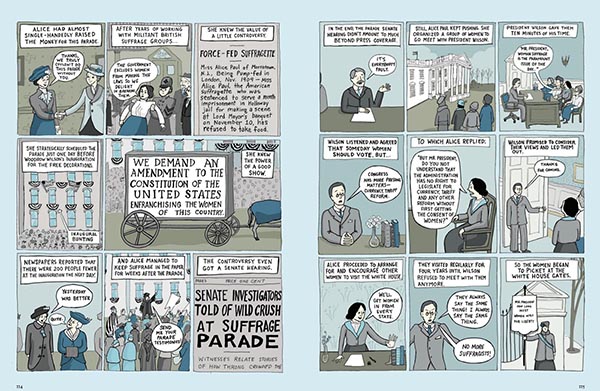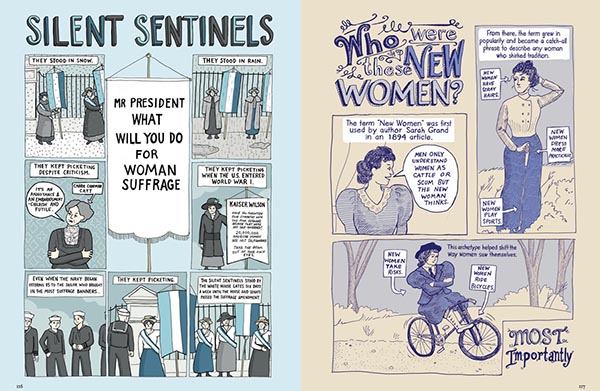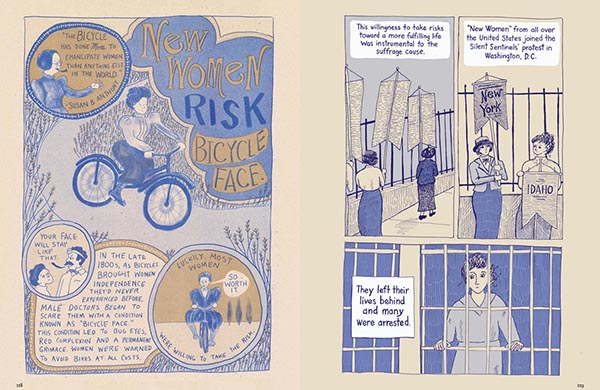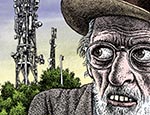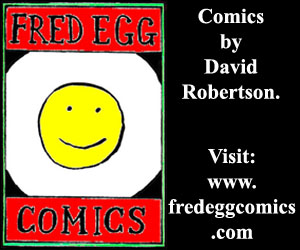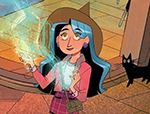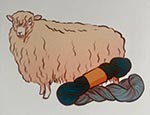Perhaps now more than ever, the right to vote and have our voice heard is at the forefront of many people’s minds. It’s so important that we remember the drastic measures the suffragettes had to take to fight, for for so many years, for women to earn this privilege and exercise the right to vote. Suffrage Song was published in July of this year and is an intersectional history of the fight for women’s suffrage – beginning way back at the Seneca Falls Convention of 1848, which was the first ever women’s rights convention to be held, and culminating in the Voting Rights Act of 1965, which prohibits racial discrimination in voting. In gorgeous hardcover, New Yorker cartoonist Caitlin Cass and publisher Fantagraphics use Suffrage Song to chronicle not only the triumphs, but also the problematic aspects of the suffrage movement.
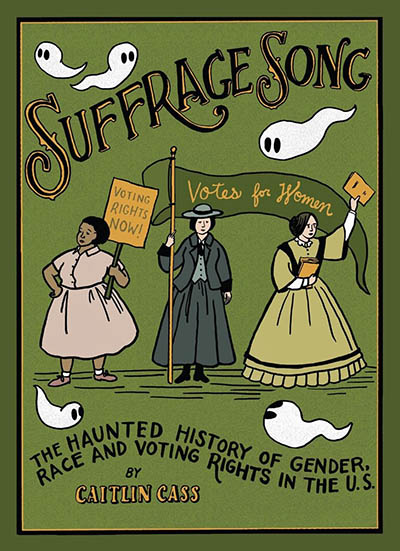
“How long must women wait for liberty?”; “Confront feminism’s unfinished business”;“We are not allowed to vote”. Over and over these messages are placarded on the blue-hued end papers, amongst sashes, buttons and flowers calling for women’s liberation. An array of over thirty women (and a few men!) follow, beautifully illustrated by Cass, with birth and death dates, as well as a small biography on their contribution to the feminist movement. From Sojourner Truth to June Johnson, we’re about to learn much more about these people’s contribution to the cause. In her introduction, Cass explains the reason for the subtitle ‘a HAUNTED History of Women’s Suffrage’; as a white woman, she struggles with her mixed emotions towards many of the contributing members of the suffragettes. Whilst these women fought for their right to vote, they also did this at the expense of black women, and other marginalised groups: “I’ll say whatever racist thing it takes to get white women the vote”. Uncomfortable though this is to think about, it’s an important part of women’s journey to achieve equal rights which must be acknowledged.
A bit of context on the history of feminism here may be useful; in literary theory, feminism is split into four different eras, or ‘waves’: simply put, this is just a way to differentiate the movements which can all be encapsulated under the same ‘feminism’ umbrella. Wave one aptly begins at the Seneca Falls Conference in 1848, calling for women’s equality and the right to vote. The ramifications of this were huge, and while white women gained the right to vote in 1928, it was not until much later, in 1965, that black women were granted the same privilege. Women’s liberation was much more the focus in wave two, with the publication of Betty Friedan’s The Feminine Mystique, calling for a re-evaluation of traditional gender roles, especially those of women as simply wives and mothers. Again, however, the movement was centred towards white women, and excluded women of colour. Wave three emerged in the 1990s, and focused on sexual harassment and lack of women in positions of power, and was more rebellious in its rejection of feminine ideals. The 2010s onwards is generally considered to be wave four, focusing on the Me Too movement and men’s sexual misconduct.
Cass’s history of suffrage effortlessly spans the first three waves with extraordinary detail. Using a blend of detailed charcoal sketches, watercolour painting, and more colourful, cartoonish snippets, she expressively articulates the good, the bad and the ugly of the journey to women’s suffrage: how women like Susan Warner cleverly managed to perpetuate stereotypes to their advantage through their writing in the mid 1800s; Margret Fotheringham’s unfair dismissal and ‘jailed for freedom’ legacy; and how universal suffrage was sabotaged by pitting black men and white women against each other (both unable to vote at the time). And who can forget the absolute mic drop of a moment from advocate Alice Paul, after she and other women were tried for peacefully picketing: “We do not wish to make any plea before this Court. We do not consider ourselves subject to this Court since, as an unenfranchised class, we have nothing to do with the making of the laws which have put us in this position.”
As the title of the book indicates, song was a huge part of the suffrage movement. Suffrage sheet music was often sold to raise money and created a communal feeling between those fighting for the same cause (though this often excluded marginalised groups). Cass incorporates many of the real songs from the suffrage movement, including ‘The Suffrage Flag’, ‘The New America’ and ‘That Suffragette’, often weaving them through the illustrations in the background, making their impactful words echo throughout the entirety of the graphic novel.
The sheer level of research that Cass has undertaken to write and illustrate this volume is exhibited in the appendices. With a detailed bibliography including pages and pages of references for quotes, songs, archives, collections, and organisations, Suffrage Song was clearly a labour of love for Cass, who has gone above and beyond in her detailing. Joining other important feminist graphic novels like Woman World, This Woman’s Work, and The Trouble with Women, much like Cass, I too “feel fortunate to live in a time when history is waking up”.
Caitlin Cass (W/A) • Fantagraphics Books, $34.99
Review by Lydia Turner





